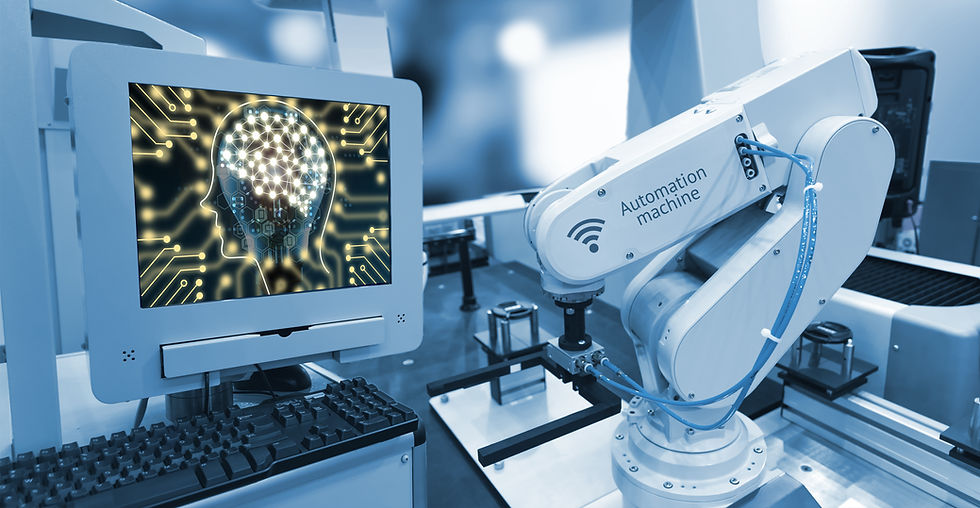Striking the Balance: Navigating Automation and Human Interaction in Customer Service for Small Businesses
- Michael Fox

- Mar 10
- 3 min read

In an era where expectations for customer service are higher than ever, small businesses must find the right balance between automation and human interaction. While technology can improve efficiency, the personal touch of human interaction is key to creating loyal customers. This blog post explores how small businesses can effectively combine automation with genuine human engagement in their customer service practices.
The Importance of Customer Service in Small Businesses
Customer service is not just a support function; it is essential for any small business seeking long-term success. According to a study by PwC, 32% of customers will stop doing business with a brand after just one bad experience. This statistic underscores the need for small businesses to prioritize excellent customer service.
For example, a local bakery might focus on personal interactions by remembering regular customers’ names and orders. Actions like this can turn a one-time buyer into a loyal patron. Prioritizing customer service not only retains clients but also sparks positive word-of-mouth, which can be vital for small businesses operating on limited marketing budgets.
Understanding Automation in Customer Service
Automation is reshaping customer service, enabling faster response times and consistent information delivery. For example, many small businesses use chatbots on their websites. These chatbots can provide answers to frequently asked questions, handle appointment bookings, and even guide customers through troubleshooting.
The benefits of automation for small businesses include:
Cost-energy Savings: By automating basic inquiries, businesses can reduce the need for dedicated staff, cutting costs by as much as 30% in some cases.
24/7 Support: Automated systems ensure that customers receive support at any hour, making it easier for online retailers to serve a global audience.
Uniform Responses: Automated systems can deliver consistent answers, which helps to ensure that every customer receives the same level of service.
However, small businesses should deploy automation selectively to avoid losing personal connections with customers.
The Value of the Human Touch
Even with the many advantages of automation, the human element remains irreplaceable. Personalized interactions can make customers feel valued and understood. Here are some reasons why human interaction is crucial:
Empathy: A trained customer service representative can empathize with customers, understanding their frustrations in ways automated systems cannot. For example, a representative can reassure a customer struggling with a delayed order and offer a tangible solution.
Complex Problem-Solving: Some inquiries require creativity and critical thinking. For instance, a customer might have a unique issue that necessitates a tailored solution, something a bot simply cannot provide.
Building Trust: Long-lasting customer relationships rely on trust, which can only be developed through genuine human interaction.
Finding the Right Balance
Achieving the perfect balance between automation and human interaction requires a thoughtful approach. Small businesses can implement the following strategies:
1. Identify Repetitive Tasks
Start by identifying common, repetitive tasks suitable for automation. For example, a local gym could automate membership renewal reminders and class schedule inquiries, freeing staff to engage more deeply with clients needing personalized fitness advice.
2. Incorporate Hybrid Solutions
Consider a hybrid customer service model where customers first interact with a chatbot for basic inquiries. Once the questions get complicated, a seamless transition to a live representative can occur. This approach combines the speed of automation with the thoroughness of human support.
3. Regularly Review Automation Performance
It's vital for small businesses to check their automation systems regularly. Gather customer feedback about their experiences with chatbots or automated responses. In a survey, 61% of consumers reported preferring human interaction, indicating the importance of ongoing evaluation.
4. Train Human Representatives
Invest in comprehensive training for your customer service team. Representatives should understand the automated systems' workings so they can step in when necessary. For example, if a customer shows frustration with the automated system, a well-prepared representative can address concerns promptly and effectively.
Wrapping Up
Navigating the fine line between automation and the human touch in customer service can set small businesses apart. The right strategies allow companies to harness the benefits of automation while keeping the warmth of personal interactions intact.
As technology progresses, small businesses have a unique chance to tailor their customer service to client needs. By blending automation with genuine human connections, they can craft exceptional customer experiences that resonate deeply.
In summary, balancing efficiency with empathy is essential for small business customer service. By thoughtfully employing both automation and human interaction, businesses create an environment where customers feel valued and supported. Embrace both elements to elevate your customer service experience today.



Comments